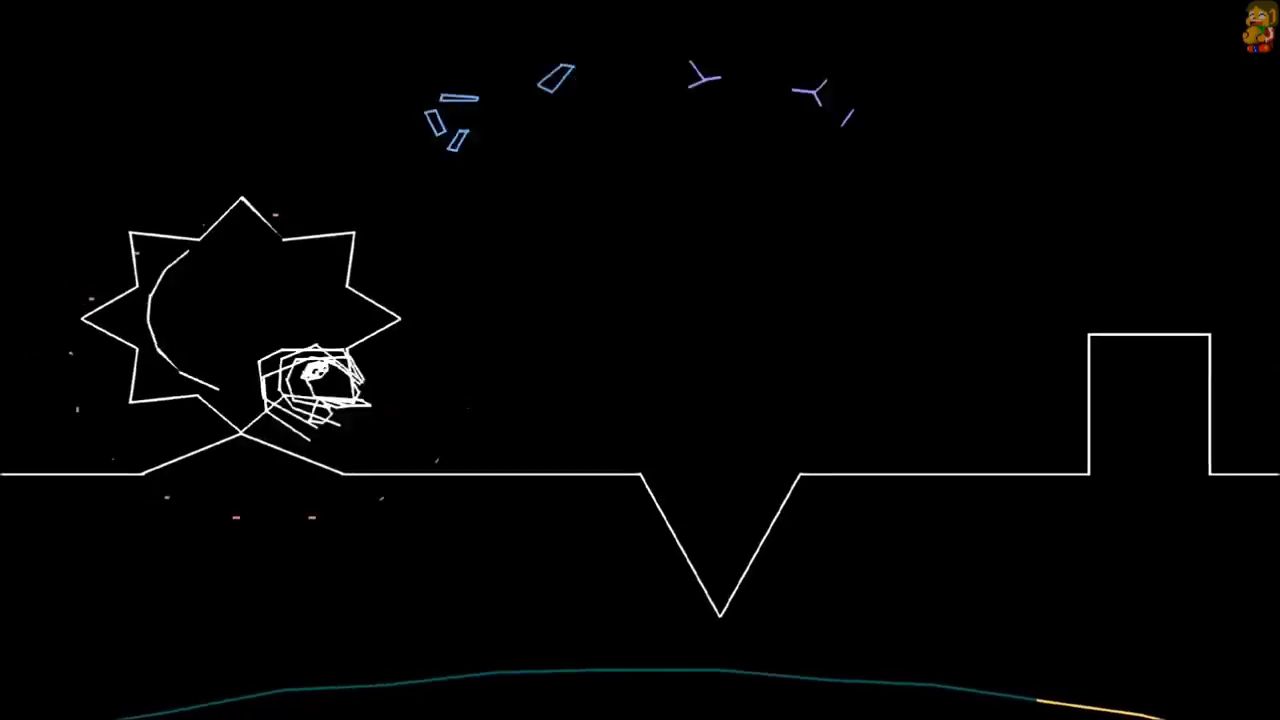

Vibri's voice was produced using a NTT Communications' Speech Synthesizer. The automatic music-generation concept was implemented when a programmer found a way to make the PlayStation analyze music CDs the system looks eight seconds ahead of what the player is listening to and generates obstacles based on "interesting" frequency changes. Vib-Ribbon 's wireframe visuals are inspired by early computer graphics, and its gameplay is based on producer Matsuura's love of drumming. Mercedez-Benz dropped the concept after the car failed the Elk test, resulting in the game's development continuing as an original project. This led Matsuura to stop developing the game after a year and a half in development. Matsuura felt the levels were too similar for capturing only bass drum frequencies and was having difficulties with the levels synchronizing with the audio. The levels were initially represented as roads taking the shape of audio waveforms created by extant music. The first prototype used polygon graphics with the player character represented as a living car. Matsuura was motivated by the concept of stages generated by music after he was repeatedly asked by fans to create games of their preferred music genre. The project began shortly after the completion of PaRappa the Rapper (1996) when Mercedes-Benz contacted Sony to promote their then-upcoming A-Class car. Vib-Ribbon was developed by NanaOn-Sha with a team of ten people including Masaya Matsuura as designer and producer. Vib-Ribbon runs completely from the PlayStation's memory pool after it loaded the first time, allowing the Vib-Ribbon disc to be removed and music CDs to be inserted to the console to generate custom stages. Difficulty varying depending on the intensity of the music. Players have the option of selecting a single track from the CD or playing all tracks consecutively. Once the game is loaded onto the PlayStation, players can remove the disc and insert their own music CDs to play stages generated from its tracks.
-4.png)
The base game features six songs divided into bronze, silver, and gold courses containing two songs each. Earning a high score will cause Vibri to sing a congratulatory song based on their position. The player's score is tallied via symbols during the gameplay and converted into points at the end of the run. Successful actions will help Vibri recover back to her higher forms, and clear enough obstacles in succession while in the rabbit form will evolve Vibri into Super Vibri, increasing the player's score until Vibri is hit. Getting hit too many times while in worm form will end the game.

Getting hit by obstacles too many times will degenerate Vibri from a rabbit into a frog, followed by a worm. Not pushing a button at the right time turns Vibri into a scribbled version of herself temporarily. Sometimes two obstacles will be merged, requiring the player to press two buttons at the same time (for example, a block and pit combination will require players to press L1 and Down together). Stages contain four basic obstacles block, loop, wave, and pit, which require players to press the L1, R1, X, or Down buttons respectively at the right time to navigate. Vib-Ribbon is a rhythm game in which players guide Vibri the rabbit across a line filled with obstacles tied in correspondence to the beat of the song, in a dimension called Music World. It spawned two Japan-only follow-ups: Mojib-Ribbon (2003) and Vib-Ripple (2004).Īn in-game screenshot, where the player-character Vibri runs through a loop, one of the game's basic obstacles. Vib-Ribbon has received generally positive reviews from critics, praising its minimalist visuals and innovative concept, and has garnered a cult following, while criticizing its simplistic gameplay and design. The graphics for Vib-Ribbon are simple, consisting of straight, white vector lines forming crude, angular drawings of the level and the player character, named Vibri.
#VIB RIBBON DOWNLOAD SOFTWARE#
The game's software loads into RAM, letting the player use any music CD to play against the game can generate a unique level from any track. Masaya Matsuura, the producer of PaRappa the Rapper and Um Jammer Lammy, returned to lead Vib-Ribbon. After design issues surfaced with the car and the ad plan was dropped, development continued as a stand-alone game. The game was initially commissioned as an advertisement for the Mercedes-Benz A-Class car. Although the original PlayStation version was never released in North America, the game was re-released on PlayStation Network in North America in 2014. It was released for the PlayStation in Japan on December 9, 1999, and in Europe on September 1, 2000. Vib-Ribbon is a rhythm video game developed by NanaOn-Sha and published by Sony Computer Entertainment.


 0 kommentar(er)
0 kommentar(er)
